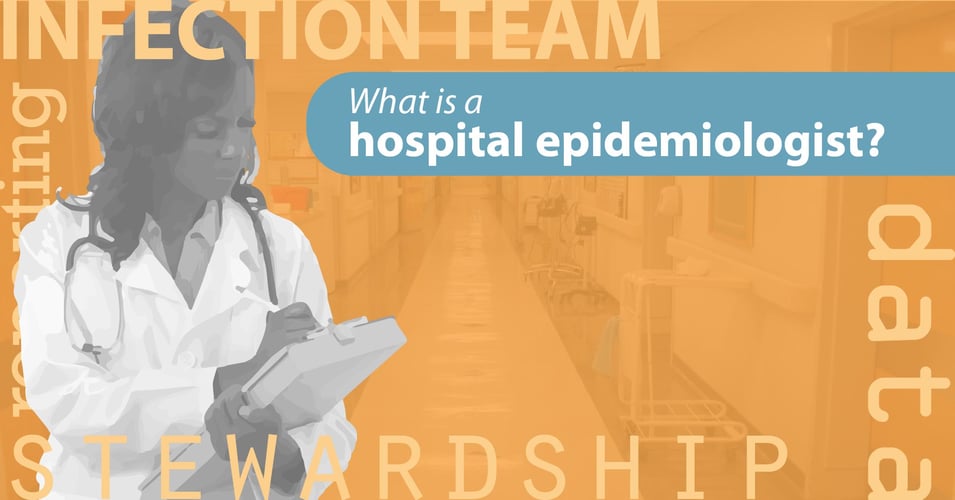Editor's Note: This post was originally published in February 2018 and has been updated for freshness, accuracy and comprehensiveness.
How Hospitals Stay Clean: Infection Prevention Teams

Erica Mitchell
2
min. read
How Hospitals Stay Clean: Infection Prevention Teams
4:26
By their very nature, hospitals both serve the most vulnerable people and host the most powerful germs. How do hospitals maintain safe levels of cleanliness in this challenging environment? The short answer is through rigorous planning and meticulous staff, all being organized into a myriad of activities and schedules by the conductor of this symphony, infection control. Let's take a closer look at the behind-the-scenes orchestration through two very important teams.
Hospitals sometimes get a bad rap about cleanliness. With hospital-acquired infections in the news, horror stories screaming from headlines, as well as our own imaginations, it's not hard to develop a belief that hospitals are somehow not up to par.
In fact, it's the exact opposite. Modern hospitals are reaching exceptional levels of cleanliness and infection control under the most difficult conditions imaginable. Even though some stories do make the headlines, these tragedies are by no means the norm. While hospital infection control experts will be the very first to tell you that they could do better (their entire mission, after all, is to eradicate germs from their hospitals), healthcare facilities have systems and protocols in place that help keep germs and the infections they cause at bay.
Infection Prevention and Control Team
Hospitals today have entire teams dedicated to infection control. While every hospital or system will vary, this team includes an overall director responsible for tracking, evaluating, and addressing infections facility-wide, a physician, a pharmacist, a nursing administrator, lead nurse and support nurses, as well as environmental services supervisors and other related personnel.
This team ensure that the hospital's protocols are followed, and makes proposals to change protocols as necessary. They report to hospital administration, and as a result will operate under certain budgets and policies depending on the size and location of the facility. One of the most important protocols determined by this team is the schedule of cleaning, including what cleansers are used, what training is provided, and ultimately, who is directly responsible for specific rooms, units, equipment, facilities, or routines. This team also approves the evaluation methods used to monitor cleanliness, including monitoring with a fluorescent marker (dots placed by supervisors that will be erased if proper cleaning is performed).
Individuals engaged in infection control are also supported by numerous associations and professional publications. Here are a few of the largest, which also provide information to the general public:
Associations / Organizations
CDC: Centers for Disease Control and Prevention: The government agency responsible for nation-wide monitoring, research, education, and regulation. They are an excellent first site to visit with questions about infections pathogens, statistics, and protocols.
APIC: Association for Professionals in Infection Control and Epidemiology: A 14,000-member non-profit association focused on issues in infection control in hospitals, nursing homes, and home health settings.
SHEA: Society for Healthcare Epidemiology of America: Professional association dedicated to research and practice in healthcare epidemiology, that is, disease incidence and control.
IDSA: Infectious Disease Society of America: An association for infectious disease specialists whose goal is education, research, and policy.
Professional and Academic Journals
Clinical Infectious Diseases: From the Infectious Diseases Society of America
Infection and Immunity: From the American Society for Microbiology
Infection Control and Hospital Epidemiology: From Society for Healthcare Epidemiology of America
Antimicrobial Agents and Chemotherapy: From the American Society for Microbiology
American Journal of Infection Control: From the Association for Professionals in Infection Control and Epidemiology
Surgical Infections: From the Surgical Infection Society
Our next post will explore the team that carries out the protocols and standards set by the Infection Control Team: Environmental Services.
![EOScu Logo - Dark - Outlined [07182023]-01](https://blog.eoscu.com/hubfs/Eoscu_June2024/Images/EOScu%20Logo%20-%20Dark%20-%20Outlined%20%5B07182023%5D-01.svg)

![[infographic] Germs on Surfaces: Ranked Download and share!](https://no-cache.hubspot.com/cta/default/216314/interactive-178559227445.png)



